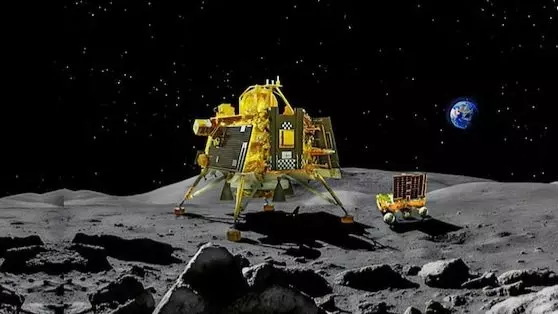
How India plans to further explore space and ocean in 2024
2024 will see the launch of NISAR satellite, a joint project by NASA and ISRO — the most expensive earth-imaging satellite ever to study climate change

After a historic landing on the Moon’s South Pole, India will exhibit its scientific muscle by sending humans to the space and getting samples from the lunar surface besides exploring the depths of the ocean.
The Indian Space Research Organisation (ISRO) is also set to unravel the mysteries of the sources of X-rays and study the enigmatic world of black holes. As a New Year dawns, India’s science fraternity is gearing up to achieve new goals.
Ocean exploration
India is scheduled to send aquanauts on board the "Samudrayaan", first to a depth of 500 metres, in March 2024, and then achieve a targeted depth of up to 6,000 metres.
XPoSat
The Indian Space Research Organisation (ISRO) will open the year by launching on January 1 the X-Ray Polarimeter Satellite (XPoSat) to unravel the mysteries of the sources of X-rays and study the enigmatic world of black holes. This launch will be on board the Polar Satellite Launch Vehicle (PSLV) from Sriharikota.
Aditya L-1 satellite
This will be followed by inserting the Aditya L-1 satellite at the Lagrange Point-1 on January 6 at 4 pm. From there, it will have an uninterrupted view of the Sun, its object of study for the next five years.
Imaging satellite
The New Year will also see the launch of the NISAR satellite, a USD 1.2 billion joint project by NASA and ISRO. It will be the most expensive earth imaging satellite ever made to study climate change.
Unmanned missions
2024 will witness two unmanned missions under the "Gaganyaan" project to validate the human-rated launch vehicle and the orbital module in actual flight.
ISRO has planned multiple sub-orbital missions using a test vehicle to validate the Gaganyaan Crew Escape System under abort conditions as a 2025 time slot is being eyed to send an Indian to space in an Indian capsule.
Private sector
The private space sector is eyeing its first commercial launch in 2024. Skyroot Aerospace and Agnikul Cosmos are getting ready their home-built launch vehicle to put small satellites in low earth orbits.
"The year 2024 will be a milestone year for us as we leap ahead to orbital launch capabilities which is critical for commercialisation of our launch services," Skyroot Aerospace co-founder Pawan Kumar Chandana told PTI.
Agnikul Cosmos, an IIT-Madras incubated space start-up, is set to carry out a test flight of its 3D-printed "Agnibaan" rocket in 2024.
The Bengaluru-based Pixxel, which has made a name for itself in hyper-spectral imaging satellites, has plans to put in place a constellation of 24 satellites by 2025.
The first six Fireflies satellites are scheduled for launch in 2024 and 18 in 2025.
Other projects
The government has approved proposals for India's participation in big science projects such as the Laser Interferometer Gravitational-Wave Observatory (LIGO) at a cost of Rs 2,600 crore and the Indo-US collaborative Fermilab initiative (Rs 900 crore).
The project, being built at Hingoli in Maharashtra, will complement two LIGO setups in Louisiana and Washington.
The government has also approved the National Quantum Mission with a target to scale-up scientific and industrial research and development for quantum technologies, at an estimated cost of over Rs 6,000 crore over the next eight years.
Research station at Antarctica
India has plans to build another research station "Maitri-II" in Antarctica, where it operates a permanent research facility called "Bharati".
The new "Maitri-II" research station, about 6,000 km away from "Bharati", is expected to start operations in 2029.
India flagged off its maiden winter expedition to the Arctic as it aims to maintain round-the-year presence at the Himadri research station in the Svalbard region of Norway.
The Chandrayaan high
The highpoint of 2023 was the launch of the "Chandrayaan-3" mission on July 14 and its soft-landing near the South Pole of the Moon on August 23 to global acclaim.
The Vikram lander module of the mission also delivered a rover "Pragyaan" on the lunar surface that roamed around for a few metres, clicked pictures and scooped lunar soil "regolith" to study its properties.
ISRO made the Vikram lander hop and touch-down a little away from its position, a demonstration of the ability of the spacecraft to take off from the Moon's surface.
Another surprise was to bring the propulsion module orbiting the Moon back to the earth's orbit. It provided a sneak peek into the possibilities of bringing back moon rocks to the earth.
(With agency inputs)

